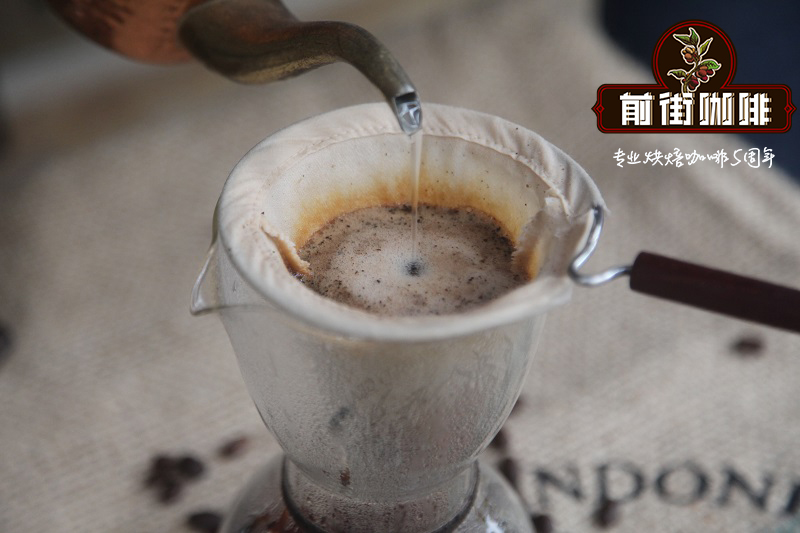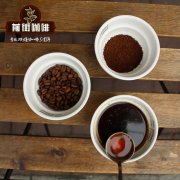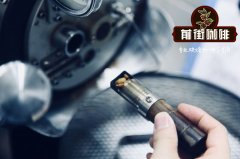How to extract coffee beans with different treatments? How to adjust the cooking of coffee beans with different treatments

Tanning is one of the oldest coffee treatments. Coffee cherries are dried like raisins after picking. In addition to producing vibrant berry-flavored coffee, this method often leads to the maximum degradation of the cellular structure of coffee. Coffee beans treated with water often have the strongest cellular structure, while honey treatment is somewhere between the two.
The degree of fermentation is one of the important judgment angles of coffee. Sun-dried coffee will have a mellow and creamy feeling as strong as wine; washed beans, such as clear wind chimes, will produce less miscellaneous smell, and washed beans have a good sour taste. It is the main source of sweetness in espresso. The water content of washed coffee is about 12-13%, while that of dry coffee beans is 11-12%.
The water temperature of extracted coffee should be inversely proportional to the degree of fiber damage.
All kinds of filters apply to different extraction water temperature, American electric trickling filter is mostly controlled in the constant temperature extraction range of 92 ℃-96 ℃ due to different brands; espresso machine can be set according to different coffee beans, the water temperature is set in 88 ℃-93 ℃ range; this also varies according to the roasting degree of coffee. Basically, the looser the coffee cell structure, the lower the extraction water temperature, about 90-93 ℃; the more compact, the higher the water temperature, about 93-95 ℃.
More than 92 ℃ belongs to the high temperature extraction which can improve the extraction rate. The extracted coffee can increase the alcohol thickness and aroma, but it is also easy to be over-extracted, so it is not conducive to the medium-deep roasted coffee beans with loose cell structure, but it is more suitable for water-washed hard beans with compact structure. Because the extraction water temperature is slightly higher, the sharp acid in the washed coffee can be raised to a change of active acid, but not too much, if the extraction temperature of the hand flushing and siphon pot is higher than 94 ℃, more bitter substances will be dissolved.
The water temperature below 92 ℃ belongs to the low temperature extraction which can inhibit the extraction rate and inhibit the precipitation of aroma and bitter substances, which is more suitable for sun-cured coffee beans. However, low temperature is not conducive to shallow roasting water washing beans, this will only extract easily soluble low acid, but can not extract enough sweet flavor and high sweet and bitter, resulting in low-temperature brewing light-roasted coffee, the flavor is not balanced.
Coffee with seriously damaged fiber has a loose and fragile structure, so it is suitable to use gentle extraction strength to extract at a slightly lower water temperature; coffee with less damaged fiber and denser structure can be overbearing and use a slightly higher water temperature to avoid insufficient extraction.
The grinding scale also needs to be adjusted
If your coffee bean is a sunburned coffee bean, the beans will be extracted faster and are suitable for a thicker grinding scale.
If the coffee beans are washed, the beans will be extracted more slowly, which is suitable for a finer grinding scale.
If it is a honey-treated coffee bean, the compactness of its fibrous tissue is between the sun and the sun, and the adjustment in the grinding scale can refer to the previous coffee bean you extracted. If the first bean is in the sun, the honey treatment needs a relatively fine scale, and if the previous bean is washed, it will be relatively thickened.
Don't forget the extraction time.
At a fixed amount of water, the longer the extraction time, the higher the extraction rate and the higher the concentration. The extraction time should be inversely proportional to the compactness of the fibrous tissue. For coffee beans that are not easy to extract, the brewing time needs to be slightly longer, and vice versa.
Important Notice :
前街咖啡 FrontStreet Coffee has moved to new addredd:
FrontStreet Coffee Address: 315,Donghua East Road,GuangZhou
Tel:020 38364473
- Prev

Why calibrating self-senses is important to the accuracy of cup testing? how to treat cup testing correctly?
Few people know more about the nuances of coffee than my colleagues, including several experienced baristas, two Q-Graders, one Q-Instructor, and another colleague who has worked in baking, QC and Green Coffee for more than 10 years. I think it will be a perfect group, and here I can test my hypothesis that the same coffee brewing will be presented in separate cups.
- Next

How to get started with Coffee roasting | basic knowledge of Coffee Baking how to roast coffee beans at home
I bet baking is something every barista wants to know! We can develop the flavor by roasting coffee. How can we get the best taste of coffee? What actually happens when you bake? Why is baking important? Coffee beans are seeds that ripen in coffee cherries. They are then processed and dried into coffee beans. Before baking, the coffee beans are green
Related
- Beginners will see the "Coffee pull flower" guide!
- What is the difference between ice blog purified milk and ordinary milk coffee?
- Why is the Philippines the largest producer of crops in Liberia?
- For coffee extraction, should the fine powder be retained?
- How does extracted espresso fill pressed powder? How much strength does it take to press the powder?
- How to make jasmine cold extract coffee? Is the jasmine + latte good?
- Will this little toy really make the coffee taste better? How does Lily Drip affect coffee extraction?
- Will the action of slapping the filter cup also affect coffee extraction?
- What's the difference between powder-to-water ratio and powder-to-liquid ratio?
- What is the Ethiopian local species? What does it have to do with Heirloom native species?

